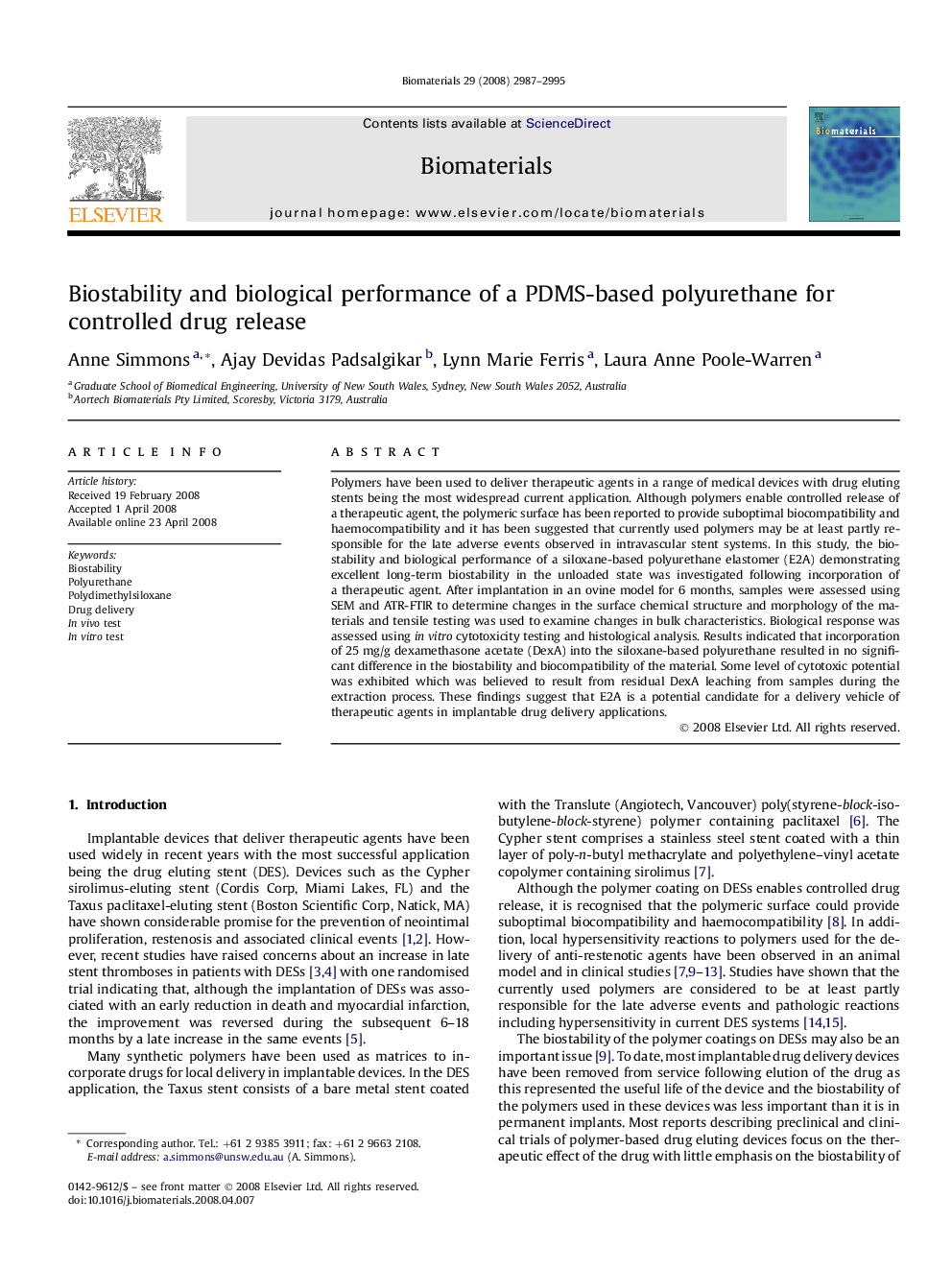| Article ID | Journal | Published Year | Pages | File Type |
|---|---|---|---|---|
| 11089 | Biomaterials | 2008 | 9 Pages |
Polymers have been used to deliver therapeutic agents in a range of medical devices with drug eluting stents being the most widespread current application. Although polymers enable controlled release of a therapeutic agent, the polymeric surface has been reported to provide suboptimal biocompatibility and haemocompatibility and it has been suggested that currently used polymers may be at least partly responsible for the late adverse events observed in intravascular stent systems. In this study, the biostability and biological performance of a siloxane-based polyurethane elastomer (E2A) demonstrating excellent long-term biostability in the unloaded state was investigated following incorporation of a therapeutic agent. After implantation in an ovine model for 6 months, samples were assessed using SEM and ATR-FTIR to determine changes in the surface chemical structure and morphology of the materials and tensile testing was used to examine changes in bulk characteristics. Biological response was assessed using in vitro cytotoxicity testing and histological analysis. Results indicated that incorporation of 25 mg/g dexamethasone acetate (DexA) into the siloxane-based polyurethane resulted in no significant difference in the biostability and biocompatibility of the material. Some level of cytotoxic potential was exhibited which was believed to result from residual DexA leaching from samples during the extraction process. These findings suggest that E2A is a potential candidate for a delivery vehicle of therapeutic agents in implantable drug delivery applications.
